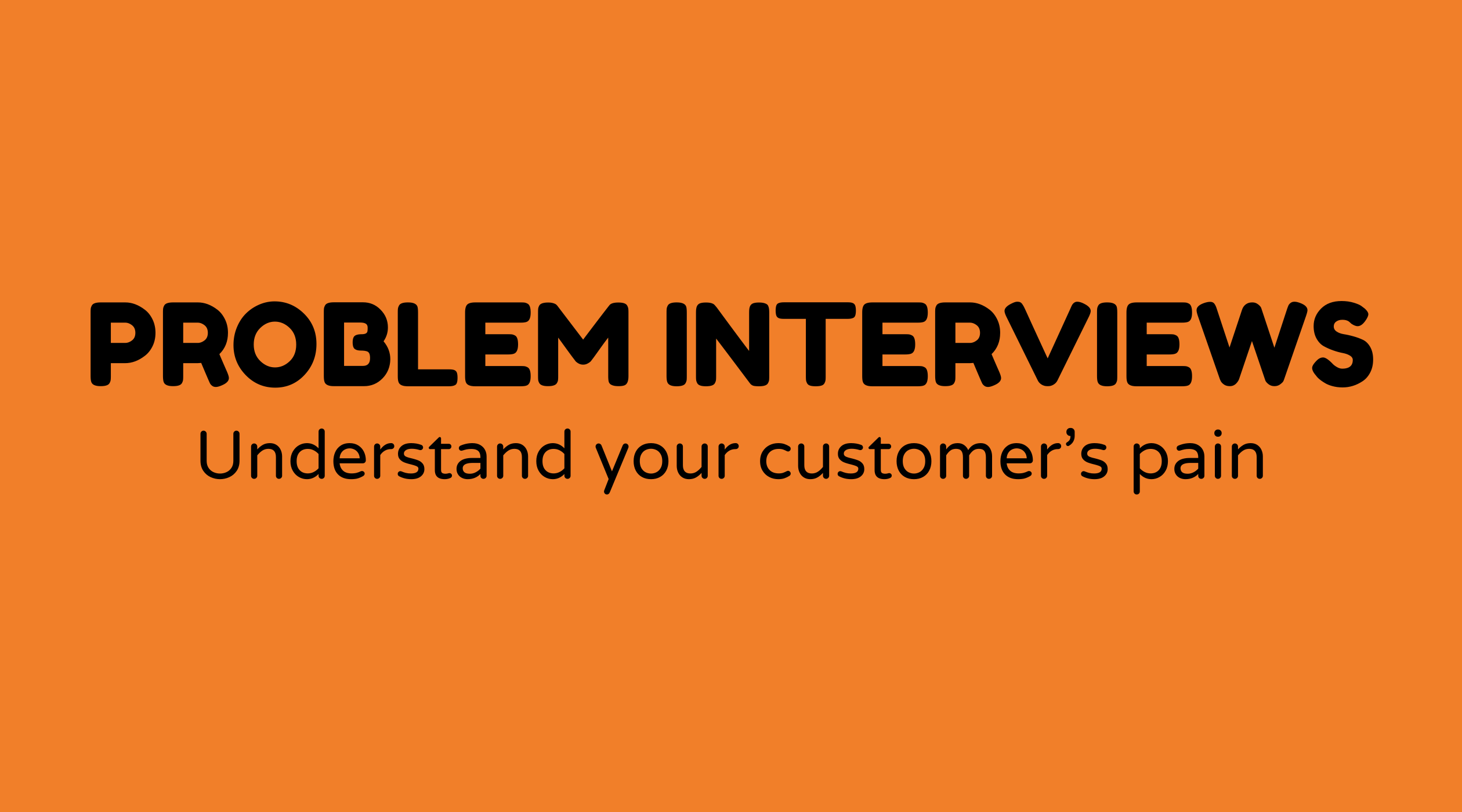Problem Interviews

Overview of Problem Interviews:
Problem interviews play a vital role in the product development process, providing opportunities to engage with potential users to uncover their needs and challenges. Conducting these discussions in the early phases of product development allows teams to design solutions that truly address user concerns. Unlike solution interviews, which focus on the product itself, problem interviews aim to explore the user's environment, behavior, and obstacles.
Why Problem Interviews Matter:
Understanding the actual issues users are encountering is essential for a successful product strategy. The rationale behind this is that addressing genuine problems enhances a product's value and necessity. Problem interviews help prevent the costly error of creating a product that fails to meet user needs. By dedicating time to deeply comprehend users, you ensure that the features and design of the product align with real user difficulties, minimizing uncertainties and guiding the team towards effective solutions.
What are Problem Interviews:
Problem interviews consist of organized conversations with target users to gather insights regarding their experiences, frustrations, and workflows. The goal is to achieve a comprehensive understanding of their problems without jumping to solutions. The process typically involves:
- Preparation: Identifying the target audience and crafting open-ended questions.
- Conducting Interviews: Engaging with users in a relaxed and conversational manner, often through video calls or face-to-face sessions.
- Analysis: Reviewing notes or recordings to identify trends and recurring issues.
- Insights: Synthesizing findings to inform product decisions.
How to Conduct Problem Interviews:
To carry out effective problem interviews, a combination of empathy, curiosity, and structured methodologies is necessary.
- Define Objectives: Clearly state what you intend to discover and establish your goals for the interviews.
- Target Audience: Select participants who align with your user profiles or possess direct experience with the issues at hand.
- Prepare Questions: Create a question guide that promotes storytelling and elaboration. Concentrate on "why," "how," and "what" inquiries.
- Interview Dynamics: Maintain an informal yet purposeful atmosphere. Listen more than you speak and encourage the interviewee to share their difficulties.
- Document and Analyze: Record the sessions (with consent) for precision. Analyze them for consistent themes and unexpected insights.
Examples of Problem Interviews:
Imagine a company creating a new software tool for project management. Through these interviews, they might find that the primary challenge isn't tool complexity but rather the absence of integration with current workflows. This revelation could shift their development strategy to prioritize seamless integrations, ensuring the product provides tangible value.
FAQs:
How should I prepare for a problem interview?
- Establish clear objectives, choose participants thoughtfully, and prepare open-ended questions to facilitate rich discussions.
What should I avoid during problem interviews?
- Steer clear of leading questions, rushing through the interview, or being overly attached to possible solutions.
How many people should I interview?
- Aim for 5-15 interviews to gather sufficient insights without feeling overwhelmed. Adjust based on market complexity.
Can problem interviews be conducted remotely?
- Absolutely, video calls or web-based platforms work effectively, offering flexibility and convenience for both parties.
How do I analyze interview data?
- Look for themes and trends. Use qualitative analysis tools or straightforward coding methods to extract crucial insights.
What if the issues revealed contradict our initial assumptions?
- Be open to questioning assumptions. Contradictions can provide valuable guidance toward a clearer understanding and more effective solutions.



